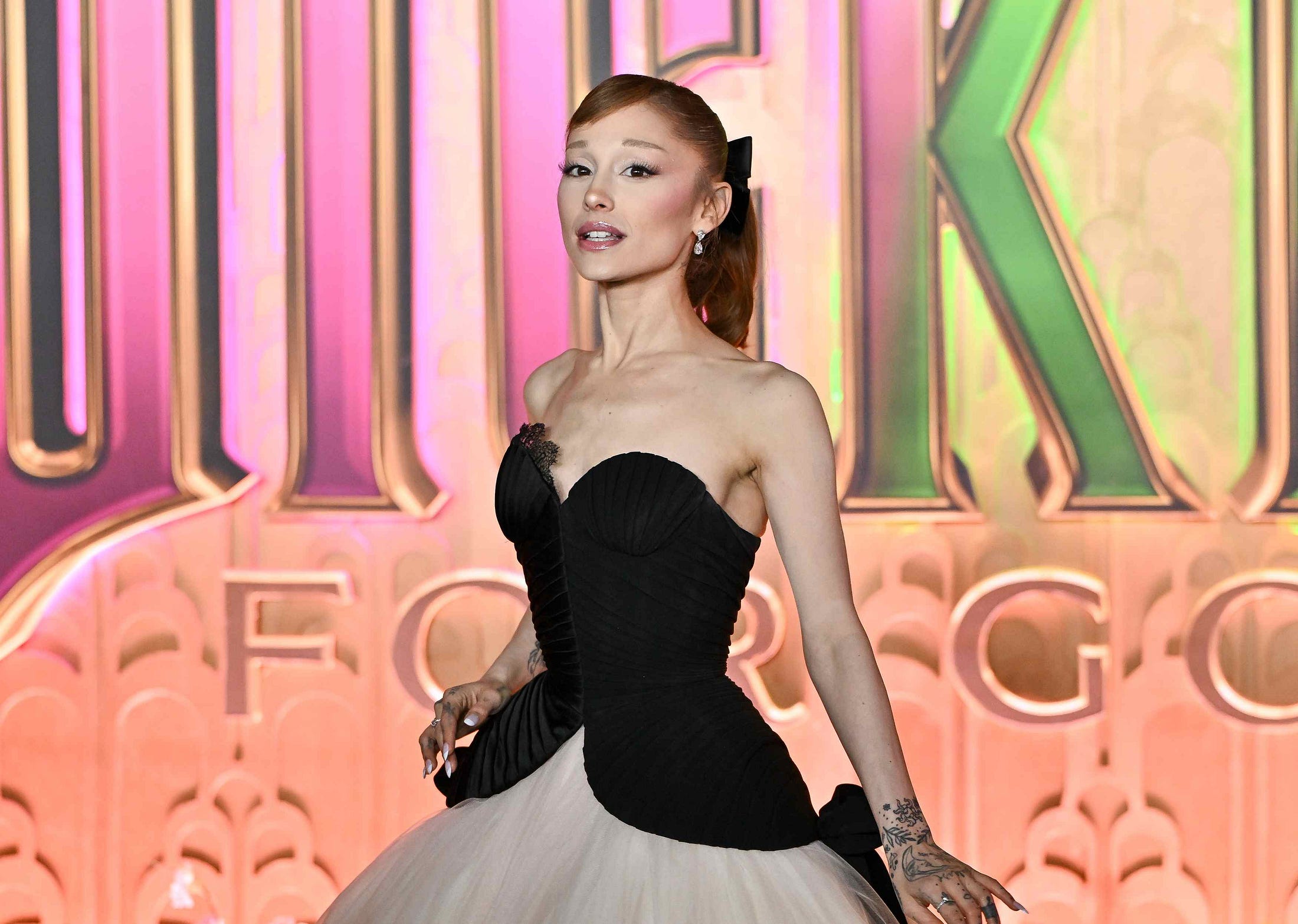In ‘Wicked,’ There’s a Very Thin Elephant in the Room Ariana Grande looks as fragile on-screen as a porcelain doll. If my daughter sees it, will this be the body she’ll feel she has to grow into?
What are we to do with a flesh-and-blood Glinda who looks even more fragile than her ink and paint predecessors? (Evan Agostini/Invision/AP)
This week, thousands of little girls across the country will slip into emerald-green or frothy pink dresses and pile into theaters to watch the second installment of Wicked, their dutiful mothers trailing behind with snacks. My own daughter isn’t old enough to see it, but if she were, I’d feel torn. Because delightful as the movie looks, the character whose shoes so many girls would slip into—the prettiest, sweetest, goodest witch in Oz—has a waist roughly the diameter of a drinking straw. Ariana Grande was utterly fantastic as Glinda in the first Wicked film—shot at the same time as the second but released last year—but she appears so delicate, so gaunt, it’s impossible not to feel uneasy. Every time she does one of Glinda’s signature twirls you half-worry she might snap in half. But it’s even harder to see her now, a few years on; as she jets about on the press tour for Wicked: For Good, her collarbones protrude, her size-zero dresses sag. You can count her ribs. Cynthia Erivo, who plays Elphaba, has also dropped a dramatic amount of weight since she began filming. Parents live in a permanent state of anxiety over what to expose our children to—what feels harmless; what feels risky? What cultural messages can they be allowed to absorb? Which heroines are worth admiring?—and our fear often drives cultural debates. One of the many random offshoots of #MeToo was a concerted campaign against animated princesses—who, the cultural establishment formally decided, were not just outdated but actively harmful because they encourage our daughters to idealize impossible thinness. In 2017, The Guardian declared, “It’s official: Disney princesses reinforce ‘limiting’ gender stereotypes,” citing research that claimed these characters contributed to “body esteem issues” in young girls. Tiny waists and shimmering gowns were not innocent fantasy but a public health hazard. This was the progressive line. To mitigate this, Disney princesses filled out. We widened their hips, thickened their wrists, and wrote them boss bitch monologues about the patriarchy. Moana was designed with an athletic build and sturdy legs, a body made for voyaging rather than fainting. In Raya and the Last Dragon, the female hero was given visible biceps and a fighter’s stance. Even Minnie Mouse traded in her minidress for a progressive pantsuit. This article is featured in Culture and Ideas. Sign up here to get an update every time a new piece is published. So what are we to do with a flesh-and-blood Glinda who looks even more fragile than her ink and paint predecessors? An Elphaba who’s shrinking with every paparazzi shot? The rule is: Don’t comment, don’t question...
Become a paid subscriber Get access to our comments section, special columns like TGIF and Things Worth Remembering, tickets in advance to our live events, and more. UPGRADE TODAY |


